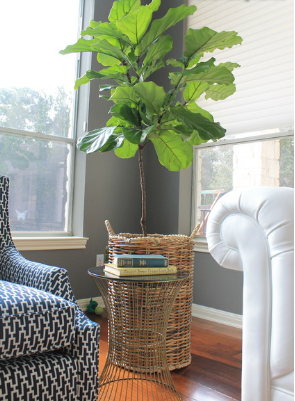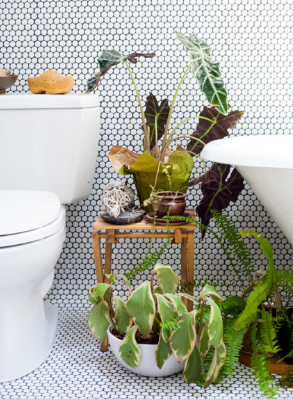

Live plants can add a natural and organic touch to every room, and you can find plants that fit any décor or architectural style. One of the secrets to having green and healthy plants is to find out which plants work best based on the light you provide.
Note: Yellow leaves from houseplants are common, but unfortunately not necessarily a symptom of a single problem. This can be a natural shedding of old leaves, but it can also be a sign of too much or too little light, or too much or too little water. When you see the leaves start to turn yellow, think about how you can adjust the care of your plants.

Every plant needs at least some sunlight to thrive. The amount of sunlight varies, and many people don’t like the time they spend in direct sunlight. Conversely, bright, indirect, or filtered light is usually best.
You can’t choose the direction of the window, but you can adjust the light that the plant receives. If they’re getting too much sunlight, such as scorched or yellowing leaves or water needs higher than average, try moving them away from windows or adding clear curtains.
If they are elongated and the leaves are yellow or not lush, see if they need more light. Move them closer to a window, or in a dark place, and see if a few hours of artificial light a day will help. Just don’t put them too close so as not to burn the leaves.
Also, keep in mind that buildings, trees, and other obstacles may block the light when your windows are facing a certain direction. See how much light your windows actually receive throughout the day and choose and care for your plants appropriately.

The most popular houseplants are those that are as comfortable at home as we are. Most of them like the average daytime and nighttime temperatures in their homes. Many people may prefer slightly higher humidity, but they are either happy with the humidity they get, or you can increase the humidity with sprays, pebble trays, and humidifiers. One thing houseplants don’t usually like is airflow. They may also be affected in the winter if they are placed too close to a cold window.
Houseplants usually want the soil to dry slightly between waterings, but there are exceptions. Less fertilizer, less than more. Pests are uncommon, and most of the pests that may appear can be easily disposed of with water sprays or insecticidal soaps.
Most importantly, pay attention to the plant itself. If they don’t flourish, adjust the light and watering schedule and go from there.

Most houseplants crave light from east-facing windows. The weather is bright, but the only direct sunlight is in the morning, when the sun is not as strong. Most of the plants in these places grow well with regular water and normal home temperatures.
The best plants for east-facing windows include Boston fern (Nephrolepis exaltata), butterfly palm (Dypsis lutescens), fig (Ficus lyrata), heart-leaved stone lotus (Philodendron scandens), phalaenopsis (Phalaenopsis spp.), umbel trees (Schefflera actinophylla and Schefflera). arboricola) and the tree of youth (Tolmiea menziesii).

If your houseplants want more light, west-facing windows are a good place to start. For most of the day, the light is bright and indirect. Later in the afternoon, it becomes more direct and intense. If the light is a little too much, just move them a little away from the window or add a transparent curtain.
Some of the most popular plants for west-facing windows include the air plant, aloe vera (Aloe barbadensis), bird of paradise (Strelitzia reginae), coleus (Plectranthus scutellarioides), English ivy (Hedera helix), geranium (Pelargium spp.) and various festive cacti.
The west-facing windows are also a good choice for plants such as solitary rhododendron, rhododendron (Rhododendron officinalis), chrysanthemums, hibiscus and Persian violet (Exacum affine) in bloom. However, once they bloom, full sunlight may shorten their flowering period. Move them away from direct light to lengthen the flowers.

This is the habitat of those plants that crave sunlight. Most south-facing windows receive at least four hours of direct sunlight a day, especially during the summer months.
Care requirements vary depending on the type of plant you grow. Cacti and succulents require a slightly drier environment and require less water. More tropical houseplants require more humidity and moist soil.
South-facing window favourite plants include garden croton (Codiaeum variagaturm), dwarf citrus, common geranium (geranium spp.), vanilla, and jade tree (Crassula ovata).

North-facing windows may not get much light throughout the day, but a surprising number of popular houseplants actually prefer these places. They are also one of the easiest houseplants to grow, typically growing best at lower humidity and less water.
Favorite houseplants for the north-facing windows include cast-iron plants (Aspidistra elatior), mother-in-law’s tongue (Sansevieria trifasciata), peacock plants (Calathea spp.), white crane taro (Spathyphyllum spp.), Philippine evergreens (Aglaonema commutatum), pothos (Epipremnum aureum), and ZZ plants ( Zamioculcas zamiifolia)。